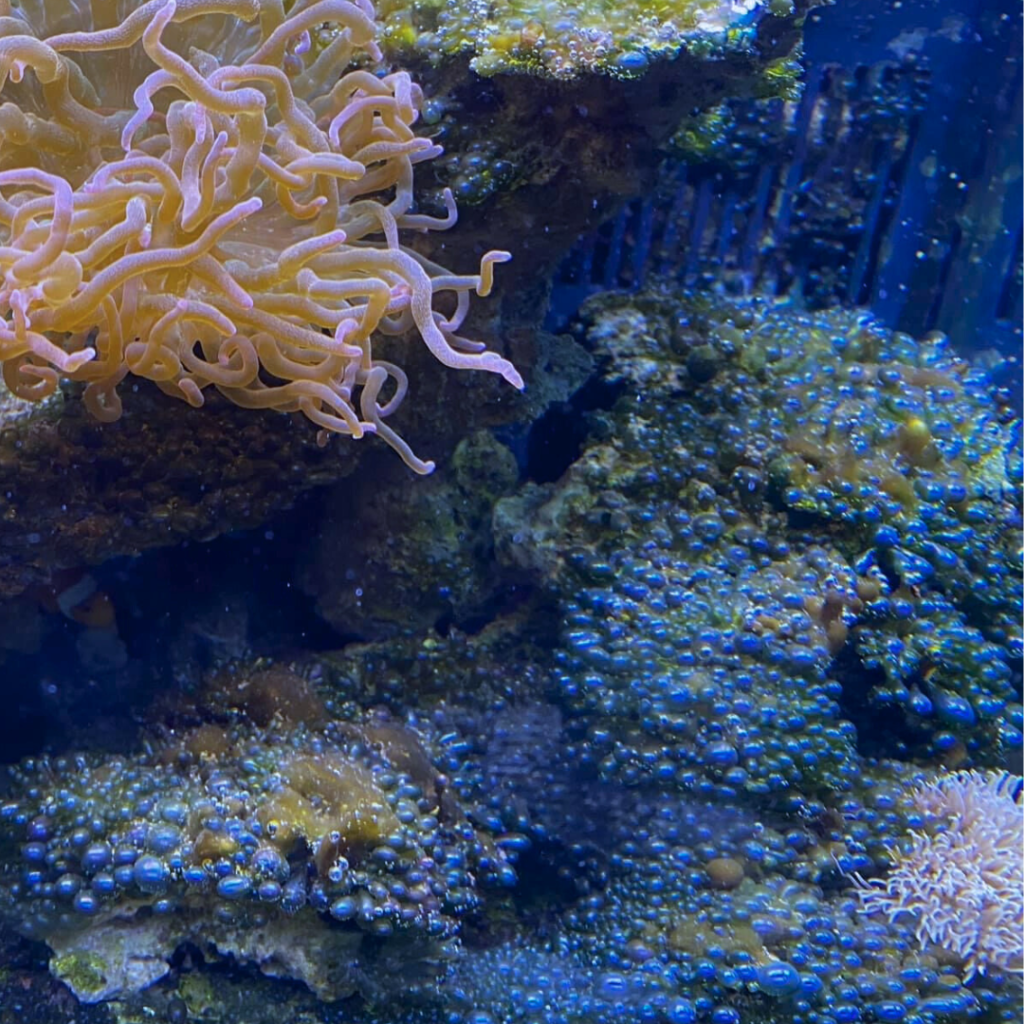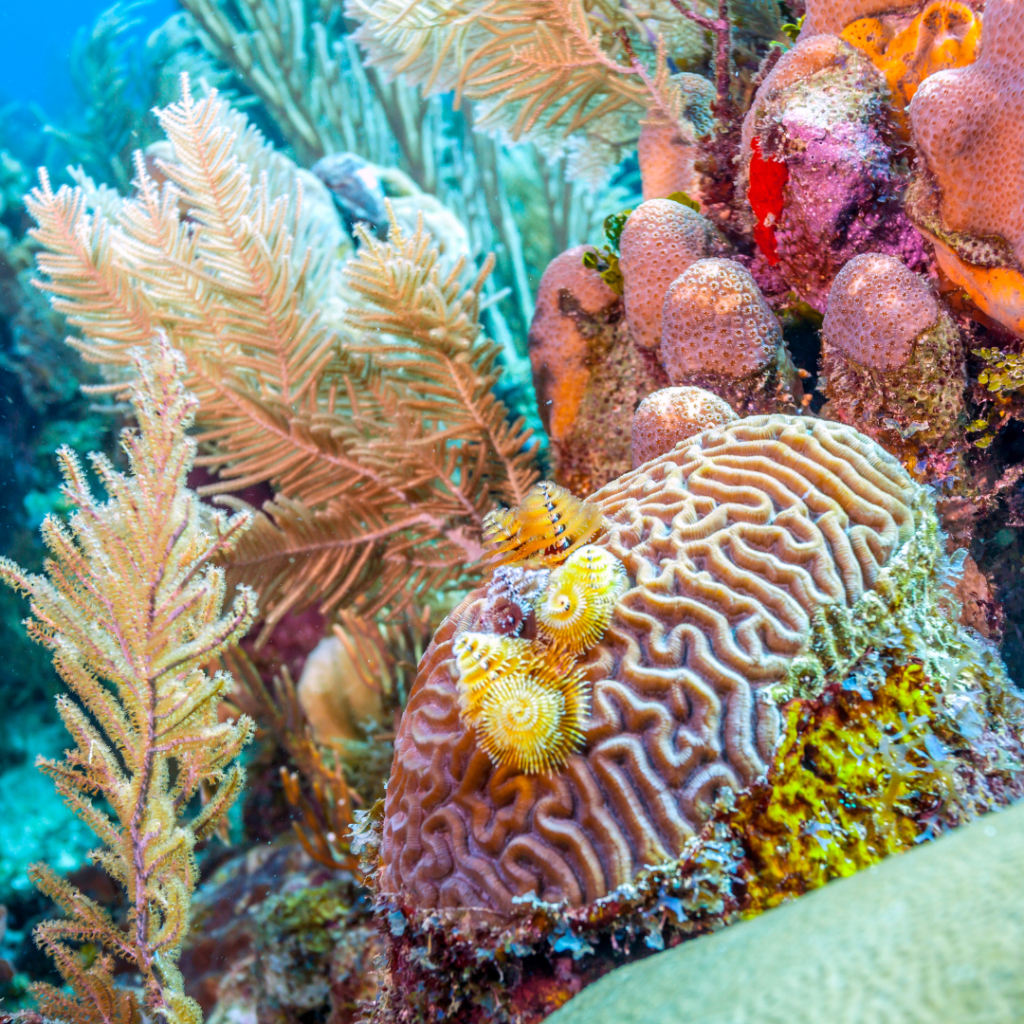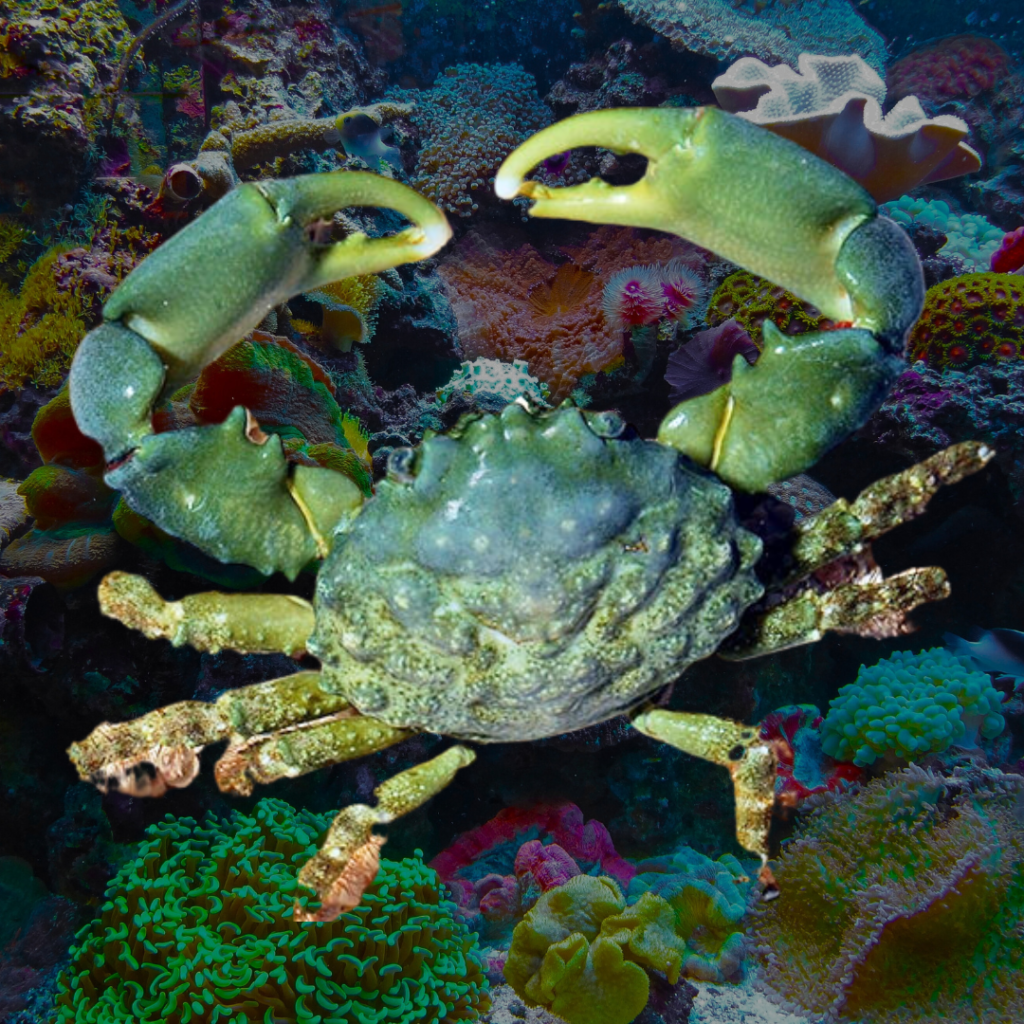Bubble algae can be a nuisance for marine and reef aquarium enthusiasts. While there are various methods to combat this persistent algae, one intriguing solution is the introduction of natural predators, such as the Emerald Crab (Mithraculus sculptus).
In this blog post, we’ll explore the fascinating world of emerald crabs, their appetite for bubble algae, and how they can contribute to maintaining a healthy and visually appealing aquarium.
What are emerald crabs
Emerald crabs, also known as green clinging crabs, are small, reef-safe crustaceans native to the Caribbean Sea. They have a distinct green to emerald coloration and are known for their ability to consume a variety of algae, including the problematic bubble algae.
These hardy crabs can adapt to a wide range of aquarium conditions, making them a popular choice for hobbyists seeking a natural solution to algae control.
Emerald Crabs and Bubble Algae

Bubble algae can be a significant challenge in marine aquariums due to their rapid growth, competition with corals for space, and overall negative impact on the aesthetic appeal of the tank.
Emerald crabs are one of the few marine creatures known to actively consume bubble algae, making them a valuable addition to an algae-ridden aquarium.
These crabs use their strong pincer-like claws to pick at the algae’s tough exterior and consume the nutritious inner contents. However, it is essential to remember that their effectiveness in controlling bubble algae may vary, and introducing emerald crabs into your tank may not guarantee complete removal of the algae.
You May also Like: How to Get Rid of Bubble Algae: Easy To Follow Steps For Success
How to care for emerald crabs
When introducing emerald crabs to your aquarium, it is crucial to provide them with proper care and an ideal environment. Here are a few tips to ensure the well-being of your emerald crabs:
- Provide a variety of hiding places, such as live rock and crevices, to make the crabs feel secure and reduce stress.
- Maintain stable water parameters, with a temperature range of 72-78°F, a salinity of 1.023-1.025 specific gravity, and a pH level between 8.1 and 8.4.
- Offer supplementary food sources, such as dried seaweed, blanched vegetables, and other algae-based foods, to ensure the crabs have enough sustenance if bubble algae are scarce or eliminated.
- Keep an eye on compatibility with other tank inhabitants, as emerald crabs may sometimes nip at soft corals, polyps, or smaller invertebrates if food is limited.
Other Algae Control Measures
While emerald crabs can be a helpful addition to your algae control arsenal, it is essential to combine their presence with other algae control measures, such as:
- Regular water changes and proper nutrient management to reduce excess nutrients that fuel algae growth.
- Manual removal of bubble algae to reduce the algae population and prevent further spreading.
- Introducing other algae-eating species, such as snails and sea hares, to assist in controlling different types of algae.
- Monitoring and adjusting lighting conditions to minimize algae growth.
Read More: Saltwater Algae Types: Identification, Causes, and Management
Are Emerald crabs reef safe?

A key concern for aquarium hobbyists is the compatibility of new inhabitants with the existing ecosystem, especially in reef aquariums. Emerald crabs are generally considered reef-safe, meaning they can coexist with corals and other invertebrates in your tank. However, some factors to consider include:
- Food availability: Ensuring sufficient food sources can prevent emerald crabs from nipping at soft corals, polyps, or smaller invertebrates when hungry. When hungry emerald crabs have been known to pick on Acans and Torch corals, so it is imparative to make sure they are well fed.
- Size and temperament: Monitor larger or more aggressive crabs for potential threats to other inhabitants.
- Tank size and structure: A well-structured aquarium with ample hiding spaces can reduce the risk of aggression towards corals and invertebrates.
Acclimating Emerald Crabs to Your Aquarium
Proper acclimation is crucial to ensure the successful introduction of emerald crabs to your aquarium. Following a gradual acclimation process can help minimize stress on the crabs and reduce the risk of illness or death.
Here is a step-by-step guide on acclimating emerald crabs to your tank:
- Float the bag: Once you have brought your emerald crab(s) home, start by floating the sealed bag containing the crab(s) in your aquarium for 15-20 minutes. This allows the temperature in the bag to gradually match the temperature of your tank water, helping the crab(s) adjust to the new environment.
- Drip acclimation: After the initial temperature acclimation, use a drip acclimation method to slowly introduce the crab(s) to your tank’s water chemistry. Set up a slow drip from your tank to the bag or a separate container holding the crab(s) and their original water. Maintain a drip rate of 1-2 drops per second, and continue this process for about 45 minutes to an hour.
- Net and release: Once the drip acclimation process is complete, use a small net to gently scoop the crab(s) out of the bag or container, and release them into your aquarium. Avoid pouring the water from the bag or container into your tank, as it may contain contaminants or pathogens.
Determining the Appropriate Number of Emerald Crabs for Your Tank

The number of emerald crabs you can safely house in your aquarium largely depends on the size of your tank and the availability of food resources. As a general rule of thumb, you can keep one emerald crab per 20-30 gallons of tank water. However, you should also consider the following factors:
- Food availability: Ensure there is an adequate supply of algae and supplementary food to support the number of crabs in your tank. An insufficient food supply can lead to competition, stress, and potential aggression towards other tank inhabitants.
- Tank size and structure: Larger tanks with ample hiding spots and live rock can accommodate more emerald crabs without causing undue stress. Ensure that each crab has enough space to roam, hide, and find food to minimize competition and aggression.
- Other tank inhabitants: Consider the number and type of other invertebrates and fish in your tank when determining the appropriate number of emerald crabs. Overcrowding can lead to stress and negative impacts on water quality, so maintain a balanced population.
Always monitor the behavior and health of your emerald crabs and other tank inhabitants to ensure compatibility and harmony within your aquarium ecosystem. Adjust the crab population if necessary to maintain a healthy environment.
Final thoughts: Bubble algae eating emerald crab

Emerald crabs can be a valuable ally in the battle against bubble algae in marine and reef aquariums. By understanding their behavior, dietary preferences, and care requirements, you can harness their natural algae-eating tendencies to help maintain a healthy and visually appealing aquatic environment.
However, remember that emerald crabs are just one piece of the puzzle, and a holistic approach to algae control is essential for long-term success in keeping your aquarium pristine.



